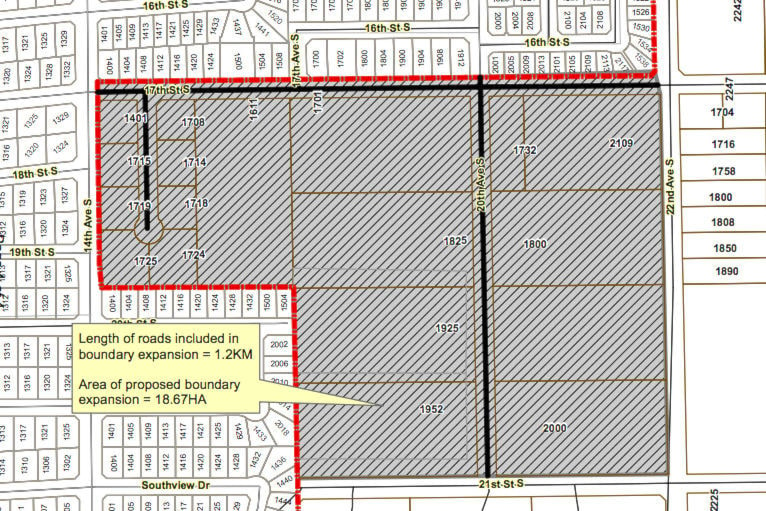Cranbrook council voted to move forward with a municipal boundary extension that will bring in roughly 18 hectares at the south end of the city into the fold.
The ultimate decision on the extension lies with the provincial government and the Ministry of Municipal Affairs and Housing.
A request was made by a land owner asking for their two-hectare property to be included into the municipal boundary, however, the city expanded the scope to include an additional 18 parcels of land and 1.2 kilometres of road.
According to a staff report, existing landowners within the 18 hectares have not yet been consulted, however, a majority of property owners opposed incorporation at an open house three years ago.
Though the city voted to move forward, it must consult with landowners, the RDEK, Ktunaxa Nation Council, and others before submitting an application package to the provincial government for consideration.
“If you look at the map, it’s all surrounded by the city, including that little cul-de-sac on 15th Ave. there,” said Mayor Lee Pratt. “Those people are all on septic and wells, they’ve been on for a long time and once they start failing, they’re going to be screaming for the cost to replace those.
“Just my personal opinion is, they’re right in the middle of the city, they pay taxes to the regional district at a very big discount compared to us, and I don’t think that’s right, so I think they should be brought into the city although that’s not an argument to give to the [provincial] government.”
Considerations for boundary extension requests, as adopted by the city in 2013, include:
• Existing land base available within city limits;
• Current and proposed land use;
• Compatibility with adjacent land uses;
• Proximity and availability of municipal services such as water, sewer, storm as well as the feasibility of service and infrastructure extension;
• Road access;
• Impacts to city operations and maintenance;
A staff analysis notes that existing land base, as reviewed in 2016, would support roughly 5,000 dwelling units, including Wildstone and River’s Crossing. Development factors for the 18-hectare block include availability of services, development costs, willingness of landowners and market conditions.
Additionally, the boundary extension would facilitate subdivision of the applicant’s property, however, nearby landowners have not brought forward any proposals or development intentions.
Bringing in all the properties within new area will add tax revenue to the city, however, rates would likely increase for those owners — some of which may nearly double — and may hinder area support.
According to a provincial guideline document, the ministry will not recommend a boundary extension if the majority of property owners within the area are opposed. However, exceptions may be made if there is an overriding provincial or local interest, such as public health or environmental protection concerns.
The area currently receives fire protection from the city, and if the boundary extension was approved, the city would shoulder the responsibility for road maintenance.
trevor.crawley@cranbrooktownsman.com
Like us on Facebook and follow us on Twitter
